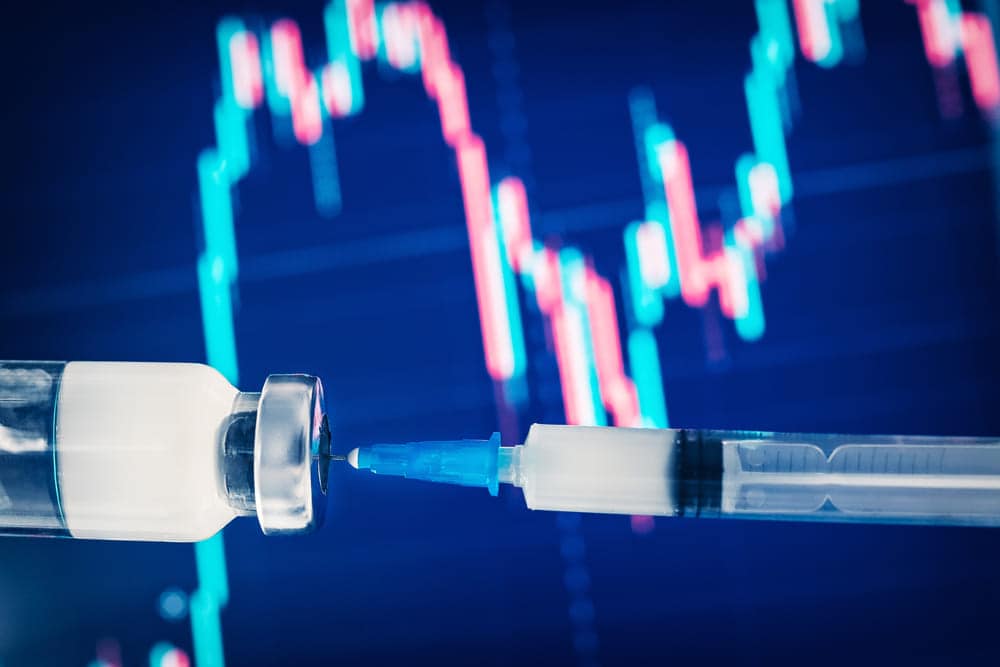United States President Donald Trump has hinted that the pharmaceutical sector will likely be the next to be hit with tariffs. While announcing on March 28, Trump did not specify the date or rates involved, but the decision will likely trigger more market uncertainty.
Notably, the market is already on the downside, as Trump recently announced an additional 25% tariff on auto imports. It remains to be seen how a similar move in pharmaceuticals will evolve.
Although the initial reaction to tariffs has led to market volatility, if such a measure is replicated in the pharmaceutical industry, several stocks still offer a safe bet for investors.
In this case, Finbold has picked two equities that could thrive in a tariff-driven environment affecting the pharmaceutical sector.
Pfizer (NYSE: PFE)
Pfizer (NYSE: PFE) is well-positioned to withstand Trump’s tariff agenda, considering the company controls massive manufacturing capabilities in the United States, with a broad range of drugs and vaccines. Trump’s pledge to bring pharmaceutical production back to America aligns with Pfizer’s existing footprint.
Unlike competitors heavily reliant on foreign supply chains, particularly from China, which faces a doubled 20% tariff, Pfizer’s domestic infrastructure could shield it from the cost hikes that imported drugs might face.
Beyond its domestic advantage, Pfizer also offers strong value to potential investors. Despite concerns over upcoming patent expirations, the company remains financially solid, projecting 2025 revenue between $61 billion and $64 billion, in line with last year’s $63.6 billion.
With a forward P/E ratio of under 9, Pfizer is significantly cheaper than the healthcare sector average of 18. Adding to its appeal, the stock offers a 6.7% dividend yield, well above the S&P 500’s 1.4%.
At the same time, growth remains a priority, with Pfizer actively pursuing acquisitions. Its $43 billion Seagen deal in 2023 contributed to $20 billion in added revenue, and the company is exploring further strategic moves.
As of press time, PFE was trading at $25.21, ending the last session down almost 1%. Year to date, the stock is down 5.2%.
Furthermore, Wall Street analysts remain bullish, with 14 experts projecting an average price target of $30.64 in the next 12 months. According to analysts at TipRanks, this represents an upside of over 21% with a ‘Moderate Buy’ rating.
Eli Lilly (NYSE: LLY)
Eli Lilly (NYSE: LLY), another American healthcare titan, could also benefit from a tariff-driven environment, given its heavy investments in domestic production. The company recently expanded its North Carolina facility with a $2 billion investment in 2024 to boost the output of its diabetes and obesity drugs, Mounjaro and Zepbound.
Notably, Eli Lilly is at an advantage because it already sources much of its active ingredients domestically or from tariff-friendly regions.
At the same time, Lilly’s innovation pipeline further bolsters its appeal. Its leadership in weight loss and diabetes treatments positions it to meet surging demand, regardless of tariff pressures.
While Trump has not clarified whether life-saving drugs will be exempt from tariffs, Lilly’s U.S.-based supply chain could provide insulation against potential disruptions.
Beyond this, the healthcare giant remains a dominant player in the obesity space, with Mounjaro and Zepbound generating $16.5 billion in 2024, accounting for 36% of total revenue. The company is ramping manufacturing and expanding into new international markets in 2025, committing over $50 billion to production capacity.
At the close of the last trading session, LLY was trading at $822.51, up a modest 0.1% for the day. Year to date, the stock has gained 5.7%.
Elsewhere, based on insights from 19 Wall Street analysts at TipRanks, LLY is expected to hit an average price target of $1,022 in the next 12 months, representing an upside of almost 25%. The experts have assigned the stock a ‘Strong Buy’ rating.
In summary, Pfizer and Eli Lilly have strong fundamentals and domestic advantages, making them well-positioned amid tariffs. However, they remain at risk if broader market conditions deteriorate due to tariff impacts.
Featured image via Shutterstock








